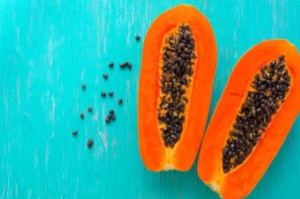There is a close connection between diabetes and diet. High blood sugar levels are a hallmark of diabetes, a chronic condition caused by the body’s inability to effectively produce or use insulin. Insulin is a chemical that helps convey glucose from the blood to the cells where it is utilized as energy. Diabetes can be caused by a combination of genetics, lifestyle, and diet factors.
Diabetes prevention and management both rely heavily on diet. Diabetes patients can control their blood sugar levels by eating a well-balanced diet that is high in fruits, vegetables, whole grains, and fiber.
Because these foods are slowly digested, they prevent sudden spikes in blood sugar by releasing glucose steadily into the bloodstream. Conversely, food varieties that are high in sugar, refined carbs, and immersed fats can cause a quick expansion in glucose levels and demolish diabetes side effects.
Moreover, overseeing segment sizes and feast timing can likewise be gainful for people with diabetes. Regulating blood sugar levels and preventing overeating can be accomplished by eating smaller, more frequent meals throughout the day. Limiting snacking and avoiding high-calorie foods late at night is also important.
Papaya is one such healthy food for diabetics. Papaya is a low-calorie fruit that is also high in vitamins and fiber, making it a healthy addition to any diet. It also has a lot of vitamins, minerals, and antioxidants that can help diabetics in some ways.
What benefits does papaya offer diabetics?
Papaya does not significantly raise blood sugar levels because it is low on the glycemic index (GI) scale. It has a GI of 60, which falls well within the diabetes patient’s safe range.

Papaya contains papain and chymopapain enzymes, which aid in the digestion of carbohydrates, proteins, and fats and prevent spikes in blood sugar.
Papaya fiber slows the absorption of sugar into the bloodstream, which helps to regulate blood sugar levels. Additionally, it helps maintain healthy bowel movements and prevents constipation, which is crucial for diabetics.
Papaya is plentiful in nutrients C and A, which are strong cell reinforcements that can assist with diminishing the gamble of difficulties related to diabetes, like heart sicknesses, vision issues, and kidney harm.
What is the most effective way to consume papaya?
For diabetics, eating papaya raw, as a snack or in a salad, is the best way to consume it. Papaya juice and smoothies should be avoided because they may contain added sugar, which can raise blood sugar levels.
You can include papaya in your diet by adding it to a smoothie for breakfast or by slicing it up for a snack in the middle of the day. Keep in mind that eating too much papaya can cause high blood sugar levels, so eat it in moderation.
In conclusion, controlling and preventing diabetes requires a healthy diet. People with diabetes can better regulate their blood sugar levels and lower their risk of developing additional complications from the disease by selecting the appropriate foods and controlling their portion sizes.

